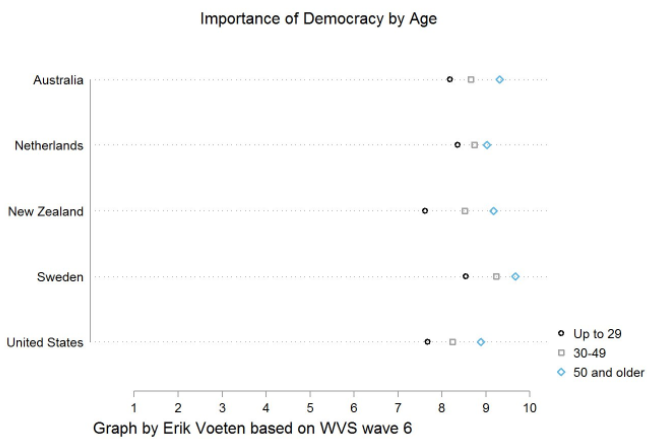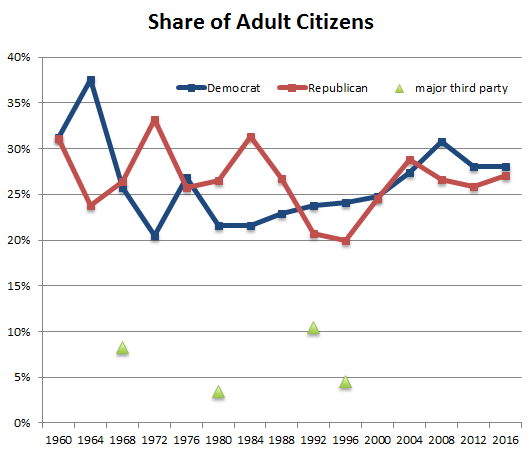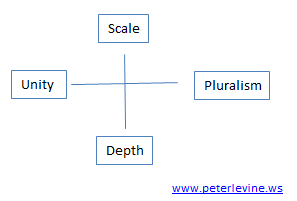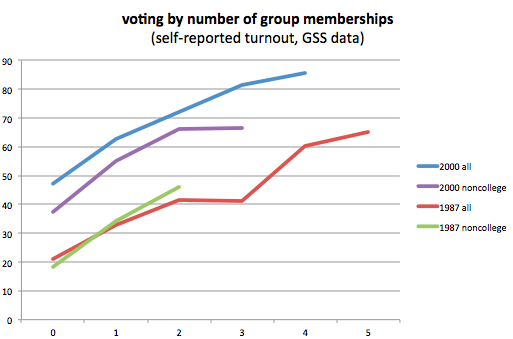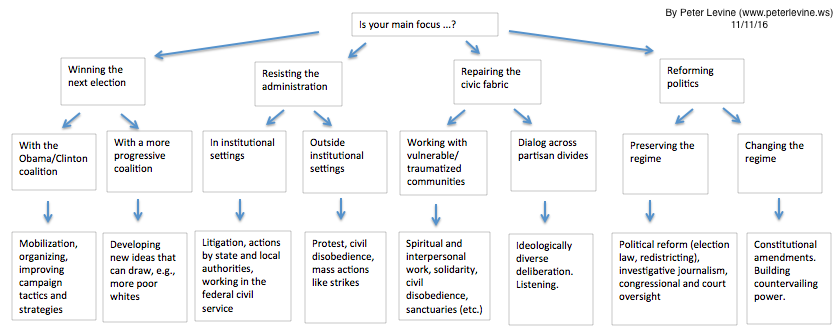(Washington, DC) I’m here for the National Council for the Social Studies annual convention. Right after the election, the NCSS sent a “post-election message” that talked generally about the importance of teaching about government and civic engagement:
As social studies educators, we teach and learn about our system of government, about controversial and timely issues, and about making informed decisions as active participants and defenders of our democracy. Our civic duty did not end at the voting booth; in fact, it has just begun. We can share instructional practices about the electoral process, the upcoming transition plans for newly elected leaders at all levels, and the new teams that will play a central role in our conversations for the next several years. We teach the principles of our U.S. Constitution.
This message could have been sent after any presidential election in the past century. There was no mention of Donald Trump or anything unusual about the campaign or the condition of the republic. I am not necessarily critical of this stance, which reflects a deep-seated and well-grounded commitment to a certain form of political neutrality. Many other schools, districts, universities, and nonprofits have taken a similar stance. However, civic educators must at least consider whether a different set of principles should apply in 2016.
Here are some arguments for neutrality:
- It’s dangerous for an arm of the state, a public school, ever to take sides on political issues. Citizens are forced to pay for public education and face considerable pressure to turn their kids over to these institutions. Children form an impressionable, captive audience in the classroom. Teachers have great power over students’ life-prospects. It’s unethical for them to use that power to change children’s political views.
- If teachers take–or imply–critical positions about any particular party or leader, elected officials and electoral majorities can press them to take different positions. Neutrality is no longer a shield.
- We are all subject to bias. Teachers split their votes between Clinton and Trump, but a majority preferred Clinton, and in big city districts on the coasts, the ratio was no doubt very high. Like everyone, Trump opponents need to remember that they could be wrong. Lots of people believe that Barack Obama is a dangerous enemy of American values. I heartily disagree, but this disagreement shows that judgment is fallible. A critical estimate of Donald Trump is a judgment, not a simple matter of fact. The “text” that we must interpret is the vast quantity of his statements over many months. People hear different points and take different messages from all this verbiage. Those of us who think Donald Trump is a profound threat to the republic could be wrong; and teachers shouldn’t communicate uncertain ideas as if they were truths.
- One of our worst problems is political polarization, a failure to interact with and understand people who disagree with us. We don’t learn or practice deliberation enough in the US today. But there is always some ideological diversity in a social studies classrooms, and teachers can advance deliberative values by creating spaces for open conversations. Further, if a particular group (such as Trump voters–or Trump opponents) happens to be missing from a given classroom, teachers can help students to understand the absent perspective. However, if the teacher takes a position, that can chill deliberation.
- Schools teach civics and social studies in the first place because elected officials tolerate it. Civics is rarely a high priority and is often on the list to be cut. Yet students benefit from civics. Therefore, the responsible course is for educators–and especially associations like NCSS–to keep their heads down. The last thing they should do is appear to oppose the incumbent administration, because it will be easy for federal and state governments to eliminate civics entirely.
- Since individual teachers will bear the brunt of any criticism and retribution, administrators and nonprofit organizational leaders should adopt a tone of complete neutrality to protect them.
But here is the opposite argument:
- We teach civics to instill republican, liberal, democratic, and humane values. We ask our students to preserve the republic against threats, both domestic and foreign. The acid test of good civic education is whether every graduate would “stand up” instead of “standing by” when a would-be dictator appeared on the scene.
- Yes, it is a matter of judgment, not a demonstrable fact, that Trump poses a threat to republican values. But some major Republican intellectuals and GOP political opponents have called Trump an authoritarian and a racist. One can give reasons, evidence, and arguments for these conclusions. Uncertainty remains, but uncertainty does not excuse us from having to decide. As Hannah Arendt would have said, “Ven zee cheeps are down, ve must make yudgments.” Judgment under uncertainty is exactly what citizenship demands. If we’re wrong, we pay the consequences, because–as Arendt would say–“politics is not a nursery.” Incidentally, Trump needn’t be remotely like a Mussolini or a Franco to pose a real danger. A Putin or a Berlusconi would be bad enough.
- To teach “standing up” or (as postwar Germans call it, Civil Courage) needn’t be partisan. In fact, if you think that the price of liberty is eternal vigilance, then most of us liberals should have been more vigilant during the Obama years. We should have stood up when the current president executed people extra-judicially by drone strike. In other words, Civil Courage would support criticism of Trump, but it would extend far beyond him.
- Schools aren’t and shouldn’t be neutral, anyway. Among the values that they must defend are pursuit of truth and basic decency for all. Any political leader who exhibits a lack of regard for truth or bullying behavior violates principles that schools must uphold. They can’t give kids bad grades for using false information, or make them stay after school for bullying, and yet ignore such behavior by the president.
- Many teachers have students who are directly threatened by Trump–or feel that they are–and it is wrong for adults to ignore their sentiment by treating the President Elect as a normal leader. By extension, in a class where everyone feels safe, the students should be made aware of how others feel.
- If we refrain from exercising Civil Courage because of possible budget cuts or other political consequences, we are abandoning free speech. That is exactly how republics fall.
I actually think the the choice between these two approaches is fairly hard. Individuals and groups can reasonably reach various conclusions. I write only on my own behalf and do not know what I would say if I represented something like the NCSS or a school district. But, at a minimum, everyone involved in educating the next generation should consider this choice.

